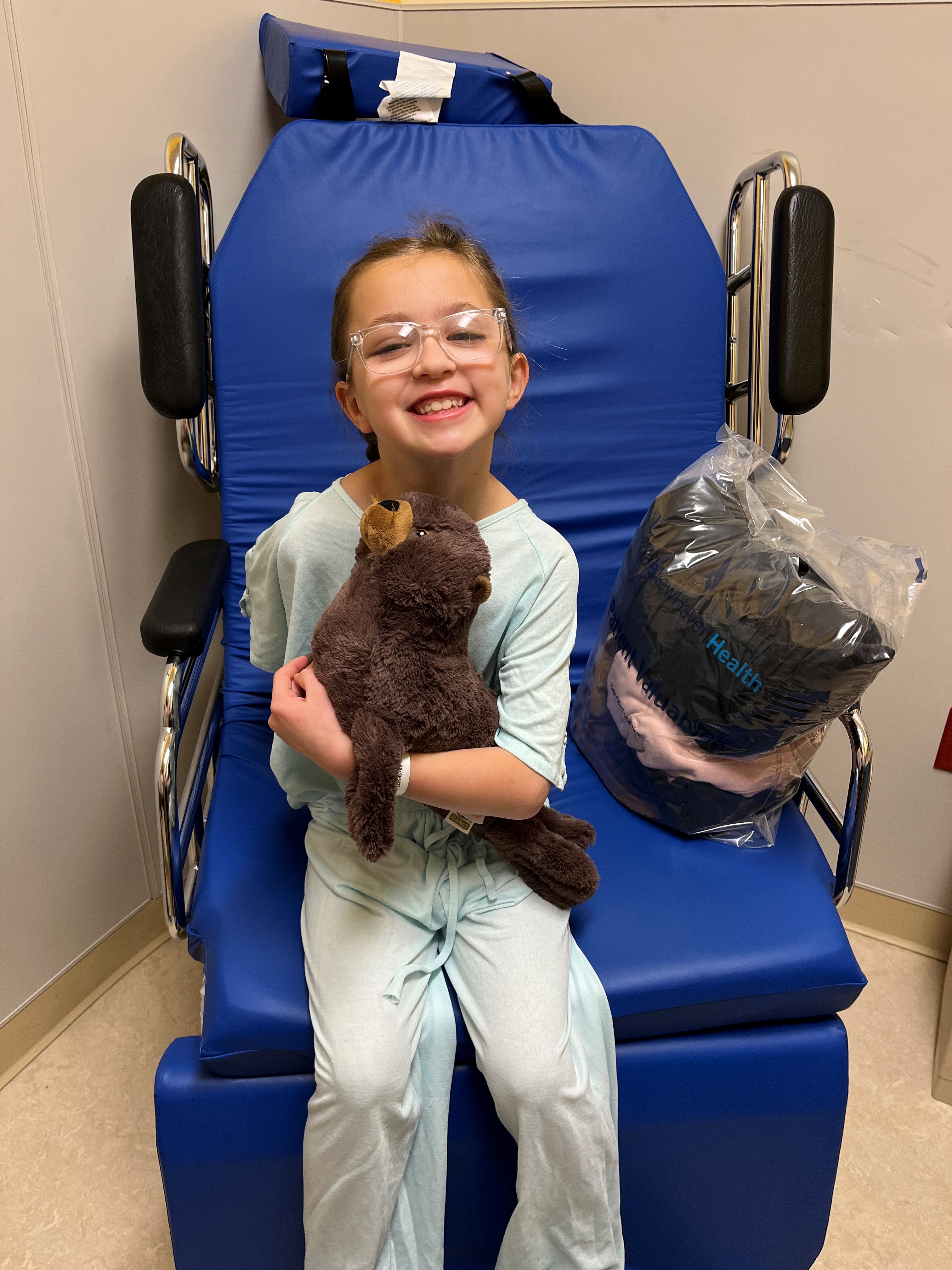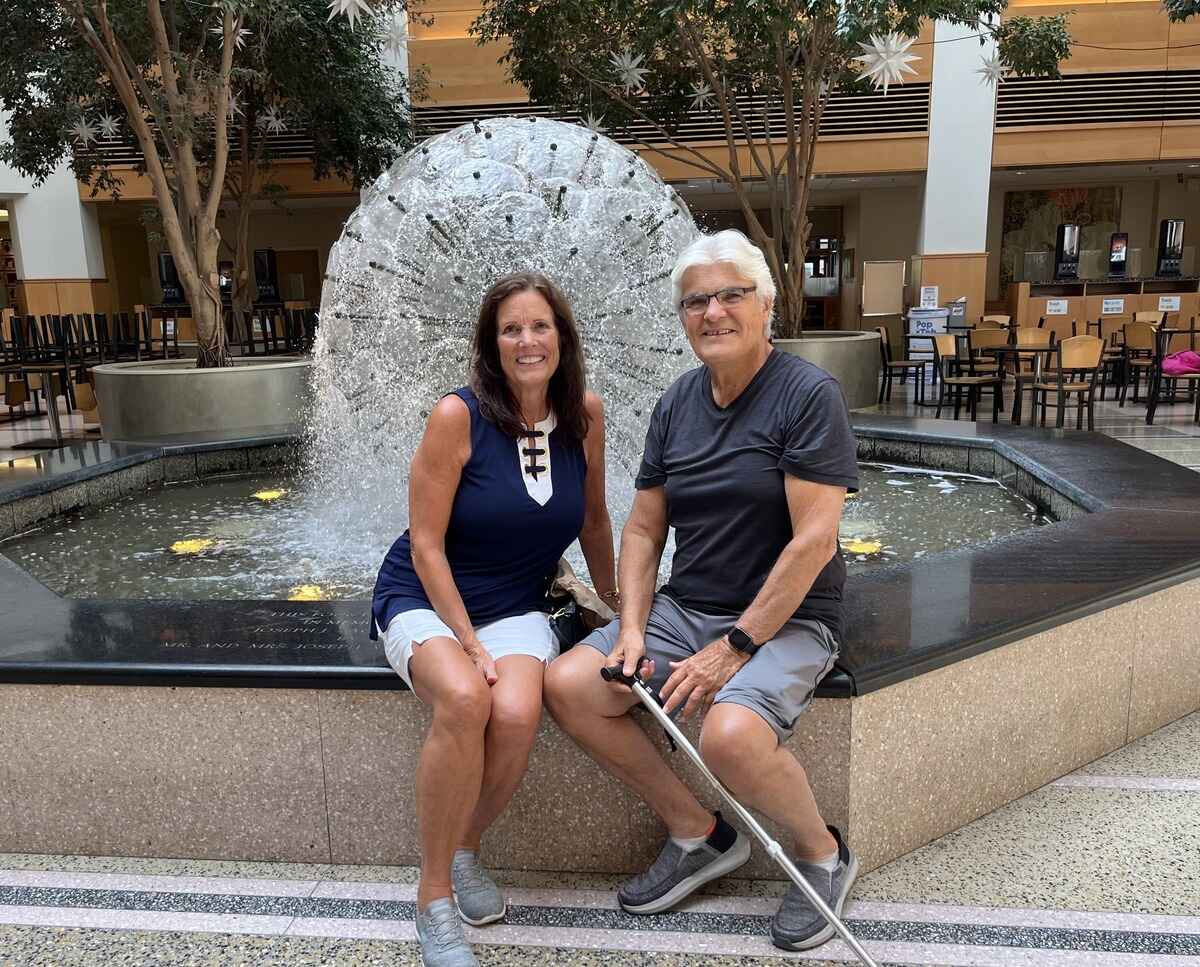When Bill Hadovski talks about his cancer journey, he rarely uses the pronoun ‘I.’ Instead, he says, ‘we,’ for he and his wife, Johann, who together have pledged to each other that whatever health challenges come their way, they would get through them as a team. “We’ve been together since we were teenagers,” said Mr. Hadovski, 74, a retired engineer. “We’ve had a certain number of challenges and adversities, and we’ve always dealt with them together. When Johann was diagnosed with breast cancer five years ago, we decided we would take every step of it together: all the doctor’s visits, all the therapy, everything. At the time, though, we had no idea how long that journey was going to be.” As Johann was finishing her treatment for breast cancer, Mr. Hadovski discovered he had melanoma. And in November 2020, as they were about to move from Connecticut to Florida to start a new chapter of their lives, Mr. Hadovski was diagnosed with esophagogastric junction adenocarcinoma. The couple, married 53 years, renewed their vow to each other that they would face the heightened challenges of cancer treatment during pandemic times together. And they remained in Connecticut, to stay close to their trusted team of oncologists at Smilow Cancer Hospital.
A Trusted Resource
As 2020 unfolded, Mr. Hadovski noticed he was having trouble swallowing. He brushed it off for a while; there were bigger issues to deal with between the pandemic and their much-anticipated move to the Sarasota area to be near his brothers. “We surmised that once in Florida it would take a long time to reestablish our health care providers so we decided to get all pending tests and visits taken care of before we left,” he said. On November 18, an endoscopy revealed that Mr. Hadovski’s swallowing problem could not be brushed off any longer. He had esophagogastric junction adenocarcinoma, a rare type of cancer in the area where the esophagus and stomach join together. One week later, he and Johann together consulted with a Smilow Cancer Hospital oncologist who knew him well. Harriet Kluger, MD, Professor of Medicine (Medical Oncology), had treated Mr. Hadovski for melanoma and still saw him every four months for follow-up visits. She promised to put together a team of specialists who were among the best that Smilow had to offer. “Collaboration among Smilow physicians and the esprit de corps are among the best attributes of my job at Yale,” Dr. Kluger said.
Team Hadovski
The multi-modality treatment for esophagogastric junction adenocarcinoma requires a team approach. Patients like Mr. Hadovski undergo two six-week sessions of chemotherapy, the second preceded by a PET scan and paired with radiation. That’s followed by surgery to remove the affected sections of the esophagus and stomach. “The treatments must be administered in a highly coordinated way,” said Daniel Boffa, MD, Professor of Surgery (Thoracic) and Clinical Director of the Center for Thoracic Cancers at Smilow Cancer Hospital. “We must be in tight communication so that our patients are able to get through the entire treatment plan.” Dr. Boffa spearheaded the clinical trial at Yale Cancer Center that led to the adoption of a PET scan as a vital tool to evaluate the effectiveness of chemotherapy at its midpoint. “If the chemotherapy is working, then patients continue on for the combination therapy using the same drug,”
Dr. Boffa explained. “If it isn’t working, then that provides the patient the option to try a different type of chemotherapy with their radiation.” Pamela Kunz, MD, Associate Professor of Internal Medicine (Medical Oncology) and Director of the Center for Gastrointestinal Cancers at Smilow Cancer Hospital and Yale Cancer Center, oversaw Mr. Hadovski’s chemotherapy. “She was so personal, compassionate, and positive, but also down to business,” Mr. Hadovski said. “She and Dr. Kluger assured me this was treatable, but we had to get it out of there as quickly as we could. So before Christmas, we were undergoing our first chemo treatment.” Clinical scheduler Evelyn Corporan and social worker Laura Donnelly helped Johann coordinate the appointments to minimize their wintery 50-mile drives from Windsor, CT and connected them with The Suites at Yale for when they required an overnight stay. At the midpoint, the PET scan showed significant progress and Mr. Hadovski felt pretty good. Although COVID-19 restrictions prevented him from maintaining his daily gym regimen he had kept for 35 years, he and Johann walked three to five miles each day on the trails around their new apartment with their two beloved golden retrievers, Diva and Lacey. Mr. Hadovski started daily radiation under the care of Kimberly Johung, MD, PhD, Associate Professor of Therapeutic Radiology and Chief of the Gastrointestinal Radiotherapy Program.
“Swallowing becomes progressively difficult over the course of treatment, so I tell my patients that eating becomes their full-time job so they can get the nutrition they need,” Dr. Johung said. “Bill was a fighter, though, and he did an excellent job.” Mr. Hadovski did feel nauseous and tired after three weeks of radiation and lost interest in food. He welcomed guidance from dietician Vanessa Salino on how to tame the nausea and adapt his diet to get the energy he needed. Before long, he felt strong enough to return to the gym. “Dr. Boffa gave me a booklet that encourages patients to get in as good of shape as you can before surgery, so I started getting in some pretty good workouts,” he said. In April, using minimally invasive surgery, Dr. Boffa removed two-thirds of Mr. Hadovski’s esophagus and one third of his stomach. He pulled up the remaining stomach tissue to reconstruct the area where the esophagus used to be. Mr. Hadovski’s care team was very pleased with his outcome. “Bill is one of our many success stories,” said Dr. Johung. “He had a great response to radiation and chemotherapy. When he went to surgery, there was no residual tumor. That’s really the best we can hope for. Bill is one of those success stories that keeps you motivated, that keeps you fighting the fight with these patients.”
An Amazing Attitude
Mr. Hadovski is still fighting the fight, too. He’s building his strength so he can focus on his hobbies of fishing and golf, and he’s adapting to the new eating regimen mandated by a smaller stomach that can only absorb a few tablespoons of food at a time. “I take the situation as a challenge,” he said, “something you’ve got to get through the best you can and find out what you can do to make it better.” That can-do spirit continually impressed his Smilow care team throughout his treatment. “Bill had the most amazing attitude,” Dr. Kunz said. “I always wondered, ‘Where does that come from?’” Mr. Hadovski has two answers for Dr. Kunz’s question. First: Johann. “She refused to let us do anything except concentrate on the positive.” Second: The experts at Smilow. “It was our confidence in Smilow and their team of people,” he said. “They said my cancer was treatable. We took them at their word, and we decided that we were going to charge down that path and show them that they were right.”




